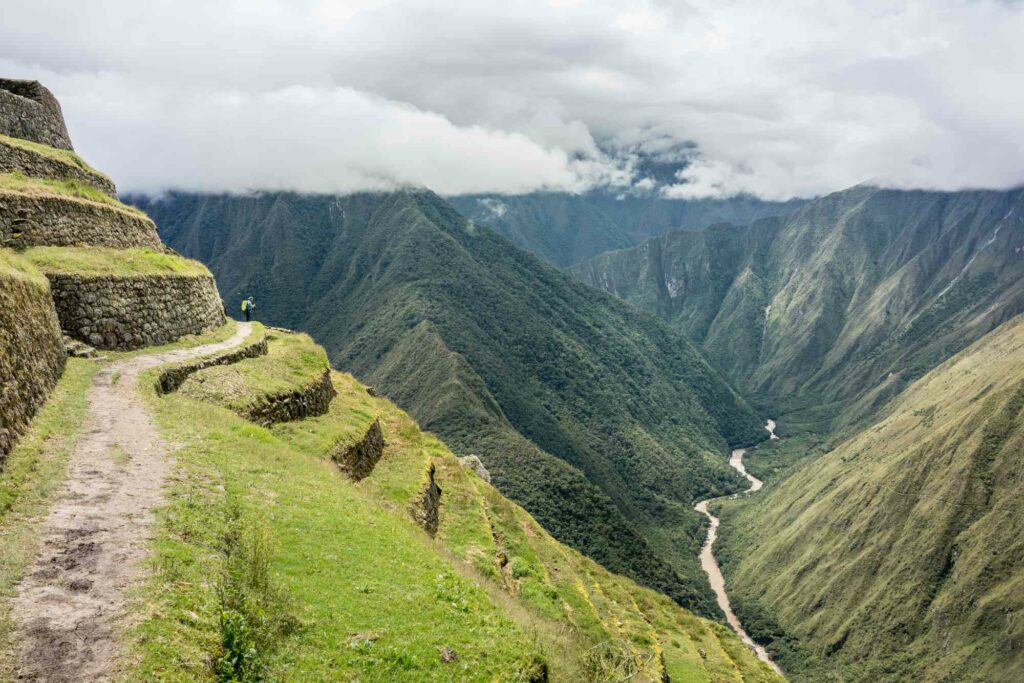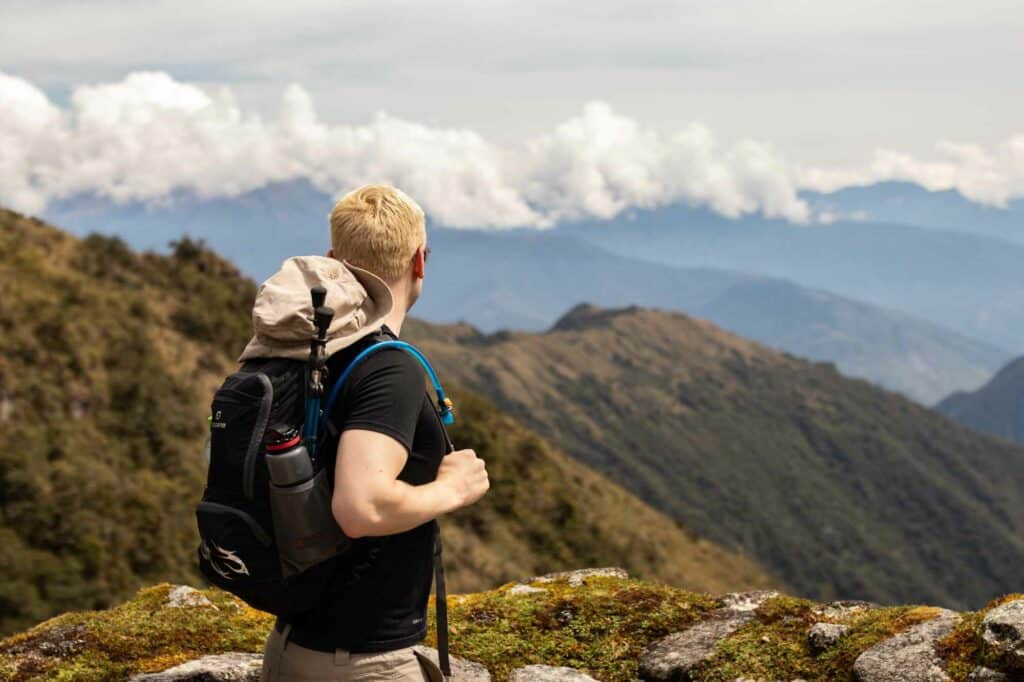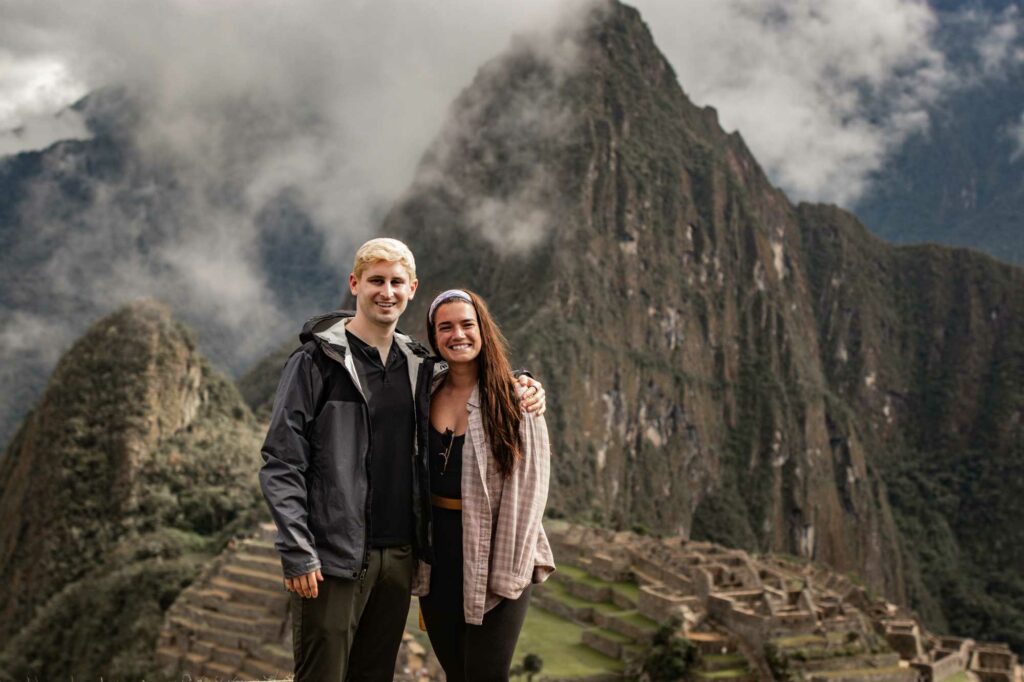Best time to visit Machu picchu or hike the
Inca Trail 2023
Machu Picchu is a world-renowned Incan ruin located in the Andes Mountains of Peru. It is one of the most sought after tourist destinations in South America, and its history and cultural significance to the local people make it a must-see. Many visitors wonder when they should plan their visit in order to make the most of their trip – so when is the best time to visit Machu Picchu 2023?
The best time to visit Machu Picchu or hike the Inca Trail is during the dry season, which runs from May to September. During this period, temperatures are mild and there tends to be less rainfall. This makes it easier for visitors to explore the ruins and take in their beauty without getting drenched by rain or feeling uncomfortably hot. Additionally, during this period, there tends to be fewer other visitors at the site, so you can enjoy a more tranquil experience as well.
It’s important to note that Machu Picchu does get extremely crowded in peak season – from June to August – so if you are looking for a more relaxed and less chaotic experience, then consider visiting in May or September instead. However, despite the crowds, there is still something special about experiencing the ruins during peak season when it is buzzing with visitors and energy.
Machu Picchu during the dry season
Machu Picchu during the dry season is an ideal time to visit – with bright blue skies and temperatures that are not too hot or cold, it’s the best time to wander around and take in all the incredible sights. Between May and September, you will experience cooler temperatures due to the elevation of Machu Picchu and the surrounding mountains, and you’ll also have the opportunity to explore some of the best hiking trails in the area. This is also an ideal time for photographers to capture the beauty of Machu Picchu before crowds arrive, so if you’re after that perfect shot – this is the best time to visit.
Overall, May through September is generally considered the best time to visit Machu Picchu. With pleasant temperatures, less rain and fewer crowds – it’s the ideal time for travelers who want to make the most of their trip. However, regardless of when you choose to go, proper preparation is key in order to have a comfortable and enjoyable experience at this remarkable site.
Machu Picchu during the rainy season
Machu Picchu during the rainy season is still a great time to visit. While it may not be as busy as peak season, there is still plenty to explore and experience. The rainy season in Peru runs from October to April and while this period does bring more rainfall, temperatures are milder than the dry season and often provide the best conditions for climbing and trekking. Additionally, you may be able to find more affordable travel deals during this period so it can be a great option for budget travelers.
The most important thing when planning your trip is to make sure you are prepared for any weather condition – bring appropriate clothing, sun protection, and water-resistant gear. With the right preparation, you can make your visit to Machu Picchu an unforgettable experience regardless of what time of year you decide to go.
How to Plan a Trip to Machu Picchu
The weather in Machu Picchu by month can vary greatly depending on the season. During the dry season, which runs from May to September, temperatures are mild and there is little rainfall – making it an ideal time for visiting the ruins and exploring their beauty without getting drenched by rain or feeling too hot. However, despite less rainfall during this period, visitors must prepare for the possibility of afternoon showers.
During the rainy season – October to April – temperatures are milder due to elevation and there is more rainfall. However, this is still a great time to visit; with proper preparation, you can experience all that Machu Picchu has to offer without being uncomfortable or getting drenched.
Machu Picchu In January
Machu Picchu in January is a good time to visit as the climate is mild and pleasant. Temperatures range from around 10°C (50°F) during the day, to low single digits at night. The weather can vary significantly depending on the elevation; if you plan to climb Huayna Picchu or Machu Picchu Mountain, be sure to bring a light jacket or sweater as temperatures can become quite cool at higher altitudes.
January is part of the rainy season in Peru, so visitors should anticipate some rainfall during their trip. However, with proper preparation and the right clothing – you can still make the most of your visit and experience all that Machu Picchu has to offer.
Machu Picchu in February
Machu Picchu in February is a great time to visit, as temperatures remain mild and pleasant. During the day temperatures can range from 15°C (60°F) to low single digits at night – perfect for exploring the ruins without feeling too hot or cold. However, as it is part of the rainy season, visitors should prepare for some rainfall during their trip.
Overall, February is a great time to visit Machu Picchu and experience the beauty of this amazing site while avoiding crowds. With proper preparation and packing the right clothing – you can make your trip memorable and enjoyable regardless of when you decide to go.
Machu Picchu in March
Machu Picchu in March is another ideal time to visit the ancient ruins. Temperatures remain mild and pleasant, typically ranging from 18°C (65°F) during the day to around 10°C (50°F) at night. Despite being part of the rainy season, visitors can expect clear skies most of the time and less rainfall than the previous months. This is a great time for exploring the ruins and soaking up the atmosphere of Machu Picchu without having to worry about getting soaked by rain or feeling too hot.
Overall, March is a great time to visit Machu Picchu, particularly if you want to enjoy beautiful views and avoid crowds – but remember to pack the right clothing and be prepared for any eventuality.
Machu Picchu in April
Machu Picchu in April is a great time to visit the ancient ruins, as the weather remains pleasant and mild. Temperatures typically range from around 20°C (68°F) during the day to low single digits at night. April marks the end of the rainy season in Peru, and visitors can expect less rainfall than previous months.
Overall, April is one of the best times to visit Machu Picchu and experience all that this incredible site has to offer without having to worry about rain or feeling too hot. With proper preparation and packing the right clothing – you can make your visit memorable and enjoyable.
Machu Picchu in May
May is one of the best months to visit Machu Picchu, as temperatures are mild yet pleasant – typically ranging from around 20°C (68°F) during the day to low single digits at night. This is perfect for exploring the ruins, hiking, and taking in the incredible views without having to worry about feeling too hot.
Overall, May is a great time to visit Machu Picchu as you can experience all that this incredible site has to offer without having to worry about rain or uncomfortable temperatures. Remember to pack the right clothing and be prepared for any eventuality, and you’re sure to have an unforgettable experience.
Machu Picchu in June
June is an excellent month to visit Machu Picchu, as temperatures remain mild and pleasant – typically ranging from around 20°C (68°F) during the day to low single digits at night. This is perfect for exploring the ruins, hiking, and taking in the incredible views without having to worry about feeling too hot.
Overall, June is a great time to visit Machu Picchu as you can experience all that this incredible site has to offer without having to worry about rain or uncomfortable temperatures. Remember to pack the right clothing and be prepared for any eventuality, and you’re sure to have an unforgettable experience.
Machu Picchu in July and August
July and August are great months to visit Machu Picchu, as temperatures remain mild yet pleasant – typically ranging from around 20°C (68°F) during the day to low single digits at night. This is perfect for exploring the ruins, hiking, and taking in the incredible views without having to worry about feeling too hot.
Overall, July and August are great times to visit Machu Picchu as you can experience all that this incredible site has to offer without having to worry about rain or uncomfortable temperatures. Remember to pack the right clothing and be prepared for any eventuality, and you’re sure to have an unforgettable experience.
Machu Picchu in September and October
September and October are ideal times to visit Machu Picchu, as temperatures remain mild yet pleasant – typically ranging from around 20°C (68°F) during the day to low single digits at night. This is perfect for exploring the ruins, hiking, and taking in the incredible views without having to worry about feeling too hot.
Overall, September and October are great times to visit Machu Picchu as you can experience all that this incredible site has to offer without having to worry about rain or uncomfortable temperatures. Remember to pack the right clothing and be prepared for any eventuality, and you’re sure to have an unforgettable experience.
Machu Picchu in November and dicember
November and December are two of the best months to visit Machu Picchu, as temperatures remain mild yet pleasant – typically ranging from around 20°C (68°F) during the day to low single digits at night. This is perfect for exploring the ruins, hiking, and taking in the incredible views without having to worry about feeling too hot.
Overall, November and December are great times to visit Machu Picchu as you can experience all that this incredible site has to offer without having to worry about rain or uncomfortable temperatures. Remember to pack the right clothing and be prepared for any eventuality, and you’re sure to have an unforgettable experience.
Best Schedule to visit Machu Picchu
Machu Picchu: between 6:00 to 08:00 (Circuit 1)
If you are wanting to experience the best of Machu Picchu and the beautiful morning landscapes that it has to offer, the most popular schedule is a great choice. It may be crowded, with 500 people arriving at that time from the Inca Trail, but this makes it even more special – so many cultures gathered together in one amazing place! You will want to take your time slowly due to all of the people, which will make it a journey full of lasting memories. However, it may be harder to find a clear backdrop for photos due to all of the activity. Nevertheless, having this unique opportunity of being surrounded by so many others at once is something not to be missed!
Machu Picchu: between 9:00 to 14:00 (Circuit 2)
This schedule allows you to explore this beautiful citadel without large crowds and a majority of the time with light flux of people. Imagine that one amazing photo capturing yourself and the staggeringly majestic Machu Picchu behind you. Have your camera at hand, as only meeting the sun’s first beams at Machu Picchu will make your experience completely fulfilling.
Best schedule to visit Huayna Picchu
Huayna Picchu: between 7:00 AM to 8:00 AM
We do not recommend this schedule during the rainy season because you are going to be able to see the sunrise.
Huayna Picchu: between 10:00 AM to 12:00 PM
Many people prefer this schedule due to its convenience because you can see the Incan citadel even on rainy or dry seasons.
Best schedule to visit the Machu Picchu Mountain
This mountain is in front of Huayna Picchu and the Lost City of the Incas and can be climbed during both morning schedules. There are two times you can climb this mountain to see Machu Picchu – 7:00 AM to 8:00 AM and 10:00 AM to 12:00 PM.
This mountain is a beautiful and complete alternative to Huayna Picchu.
In conclusion
In conclusion, the best time to visit Machu Picchu is April through October. During this period temperatures are mild yet pleasant with less rain than previous months. This makes it the ideal time for exploring the ruins, hiking, and taking in the incredible views without having to worry about feeling too hot. So, when planning your next trip to Machu Picchu make sure to keep these key months in mind and have the best experience possible.
Travel to Machu Picchu
The Inca Trail to Machu Picchu is an adventure that many travelers consider the highlight of their lifetime. The well-kept Inca trails weave through amazing mountain scenery, cloud forests and steep ascents, offering a unique glimpse at Incan sites along the way. Inca Trail tours include visits to Incan ruins, high altitudes and vibrant flora and fauna. Adventure seekers can also enjoy camping overnight as part of their tour or choose a more luxurious option with access to multiple rest stops and Incan villages. The incredible natural beauty combined with cultural learning opportunities make it no wonder that Machu Picchu is one of the top destinations in South America.
Inca Trail Treks:
Alternative Treks to Inca Trail:
Top Questions about the Inca Trail Hiking
The Inca Trail is a 27-mile journey through mountainous regions and over difficult terrain. The trek takes place at a high elevation of up to 4200 meters above sea level. As a result, this is a physically demanding exercise that requires you to be physically fit. In the months leading up to the trek, it is recommended that you go to the gym or walk for a couple of kilometers every day. It is also critical that you acclimate to the altitude. You can accomplish this by spending a few days in Cusco, which is 3400 meters above sea level.
Every tour operator is a little different, but the hike is usually divided into the following sections:
- Day 1: 11 km (6.8 miles)
- Day 2: 12 km (7.5 miles) (7.5 miles) This day also includes a hike over Dead Woman’s Pass. At 4215 meters / 13,829 feet, this is the highest point on the Inca Trail. Please keep in mind that this is nearly 1800 meters/5905 feet higher than Machu Picchu! That is more than a mile higher than Machu Picchu!
- Day 3: 16 km (10 miles)
- Day 4: 4 km (2.5 miles) This day is dedicated to visiting Machu Picchu, the Last City of the Incas. Early in the morning, it’s a short hike through the famous Sun Gate into Machu Picchu! Then you’ll spend several hours with your guide exploring Machu Picchu.
The total elevation gained and lost on the Inca Trail in Peru is nearly 6000 feet (1800 meters). The Classic Inca Trail stretches for about 28 miles or 45 kilometers and ranges in altitude from 7872 feet/2400 meters at Machu Picchu to over 13,700 feet/4200 meters at Dead Woman’s Pass.
There is no government regulation regarding the age limit for the Inca Trail, and AltitudExperience does not have an age requirement, particularly for children. We’ve seen five-year-olds and even two-year-olds hike with their families, with the parents and porters taking turns carrying them!
Yes, it’s the same route as the shorter trek, just slower and with more time spent at the ruins each day. While you will still arrive at Machu Picchu on Day 4, you will be there for sunset rather than sunrise (hopefully due to good weather), and then you will head down to Aguas Calientes for some much-needed rest and a hot shower. The following morning, you will be at Machu Picchu for the sunrise (again weather dependent). The best option for families with younger children.
We strongly prefer all balances to be paid in CASH, either US or Peruvian currencies are accepted. Here in Cusco everything is done with cash – all salaries are paid in cash for our guides, porters and chefs and all logistics are paid in cash. But we understand that carrying so much cash is a concern when travelling. We are now able to accept most major credit cards at our office. Please keep in mind that credit card companies make it extremely expensive for us to process these cards, so we do charge a 5% transaction fee. You can also pay using PayPal, and we can help you through the process.

Travel New Posts








